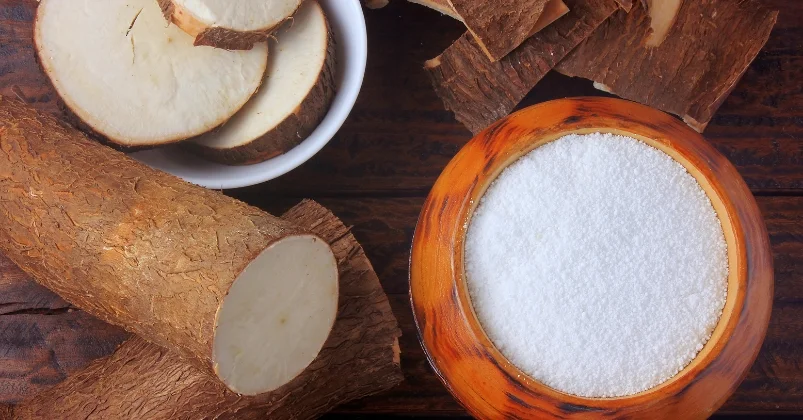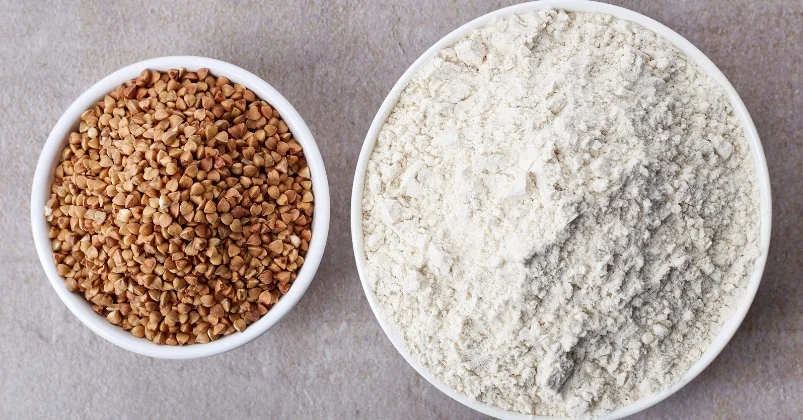When exploring the world of gluten-free baking, you’ll be able to simply turn out to be apprehensive based mostly on the number of flours accessible. Gluten-free flours have gained recognition in recent times, opening up a world of prospects for these with celiac illness or gluten sensitivity and anybody trying to discover different components. On this newbie’s information, we’ll stroll you thru frequent gluten-free flours and their makes use of, serving to you navigate this thrilling culinary terrain.
Understanding Gluten
Earlier than leaping into gluten-free flours, let’s perceive what gluten is. Gluten is a protein present in wheat, barley, and rye, and it is chargeable for the elastic texture of bread and the construction of many baked items. For these with gluten-related well being points, akin to celiac illness or non-celiac gluten sensitivity, avoiding gluten is essential to sustaining their well-being.
Gluten-Free Flour Fundamentals
Gluten-free flours are derived from grains, nuts, seeds, and tubers that naturally don’t include gluten. Every kind of flour has its distinctive properties, flavors, and makes use of. Listed below are some generally used gluten-free flours:
1. Rice Flour

Rice flour, produced from finely floor rice grains, is without doubt one of the most versatile gluten-free flours accessible. It has a impartial taste and works nicely in each candy and savory recipes. Rice flour is usually utilized in gluten-free baking mixes, pie crusts, and as a thickening agent for sauces and soups.
2. Almond Flour

Almond flour, produced from floor almonds, provides a pleasant nutty taste to your recipes. It is excessive in wholesome fat and protein, making it a well-liked alternative for gluten-free baked items like cookies, muffins, and pancakes. Almond flour additionally provides a moist and tender texture to recipes.
3. Coconut Flour

Coconut flour is a singular choice produced from dried and floor coconut meat. It is excessive in fiber, low in carbohydrates, and imparts a refined coconut taste. This flour is good for creating moist and dense baked items akin to brownies, pancakes, and sure bread recipes.
4. Tapioca Flour

Tapioca flour, also referred to as tapioca starch, is a starchy, barely candy flour produced from cassava roots. It is a wonderful alternative for thickening sauces, soups, and gravies. Tapioca flour can also be utilized in gluten-free baking to enhance the feel and crumb of bread, muffins, and cookies.
5. Sorghum Flour

Sorghum flour, milled from sorghum grain, has a light, barely candy taste. It is usually utilized in mixture with different flours to create a balanced texture in baked items. Sorghum flour is appropriate for making bread, pizza crusts, and muffins.
6. Chickpea Flour

Chickpea flour, additionally known as gram flour or besan, is produced from floor chickpeas. It has a barely nutty taste and is often utilized in savory dishes like Indian pakoras, crepes, and gluten-free flatbreads. Chickpea flour is a flexible choice for each baking and cooking.
7. Potato Flour

Potato flour is produced from entire potatoes and has a impartial style. It is usually used as a thickener in soups, stews, and gravies. In gluten-free baking, potato flour can be utilized in small portions to enhance moisture retention in bread and pastry recipes.
8. Buckwheat Flour

Regardless of its title, buckwheat is of course gluten-free and never associated to wheat. Buckwheat flour has a sturdy, earthy taste and is a staple in gluten-free pancakes, crepes, and soba noodles. It is excessive in protein and fiber, making it a nutritious alternative.
Selecting the Proper Flour
The important thing to profitable gluten-free baking is knowing which flour or mix of flours will work greatest in your recipe. Listed below are some suggestions that will help you select the precise one:
1. Take into account the Recipe
Take into consideration the kind of dish you make. Some flours work higher in candy recipes, whereas others shine in savory dishes. For instance, almond flour is superb for cookies, whereas chickpea flour is ideal for savory flatbreads.
2. Texture Issues
Texture performs a big function in gluten-free baking. In case you’re aiming for a light-weight and fluffy outcome, think about combining flours to stability out the textures. Experimentation is vital to discovering the correct mix.
3. Dietary Preferences and Restrictions
Take note of any dietary restrictions or preferences you or your company could have. Some flours are larger in protein or fiber, which might be advantageous in particular diets.
4. Taste Profiles
Take into account the flavour the flour imparts. Some flours, like coconut flour, have distinctive flavors that may improve sure recipes. Ensure the flour enhances the general style of your dish.
Gluten-Free Flour Blends
In case you’re feeling overwhelmed by the prospect of selecting and mixing completely different flours, you are in luck! Many gluten-free flour blends can be found in the marketplace, particularly designed to imitate the properties of all-purpose wheat flour. These blends are handy and sometimes produce wonderful leads to a variety of recipes.
Baking is a science, so experiment!
As with every culinary endeavor, follow makes excellent relating to gluten-free baking. Do not be discouraged in case your first makes an attempt do not seem as anticipated. Gluten-free baking is each an artwork and a science, and it could take a while to seek out the proper mixture of flours and strategies that give you the results you want.
With the big variety of gluten-free flours accessible and just a little experimentation, you’ll be able to create scrumptious dishes that everybody can get pleasure from, no matter their dietary restrictions. So, roll up your sleeves, inventory your pantry with gluten-free flour, and embark on a flavorful gluten-free baking journey.


